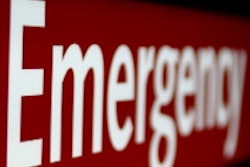
On the opening day of last month's U.K. Radiological Congress (UKRC), Dr. Giles Boland gave a keynote lecture on "Error in radiology: How to reduce it and deliver better patient outcomes." Speaking to a full hall of delegates, the professor of radiology at Harvard Medical School in Boston, Massachusetts, used the term "actionable report." This simple term has stuck in my mind.
Radiology reports are medical opinions, and they should answer the clinical question on the request card. When an abnormality is seen on the images, the report must include a tentative or differential diagnosis (or call it indeterminate), provide advice on further appropriate investigations (radiological or nonradiological), advice on further management or referral to an appropriate specialty (advice should be appropriate for local practices), and include information about the degree of confidence in the diagnosis (e.g., consistent with, suspicious of, likely).
Actionable reports are dependent on three key factors:
Access to clinical information, including instant access to a full imaging history on PACS, and instant access to blood results, clinic letters, discharge summaries, endoscopy findings, etc., is essential for accurate diagnosis. Our hospital RIS has one-click URLs context links to patient's blood results, and other electronic patient record (EPR) information.
Regular face-to-face dialogue with local clinical teams. Multidisciplinary team meetings (MDTMs) and face-to-face consultation with clinical colleagues provide radiologists with the understanding of how patients are treated, and thus allow radiologists to give appropriate advice as part of a report.
Subspecialty interest development is not confined to tertiary referral centers. Most modern radiologists work in clinical teams and develop subspecialty interests -- e.g., breast radiology, musculoskeletal radiology, chest radiology, gynecological imaging, and ear, nose, and throat (ENT) radiology. To build up subspecialty skills, regular face-to-face clinical meetings and adequate reporting volumes for the specialty are essential. Office-based teleradiologists who do not have any face-to-face dialogue should not be considered to be a subspecialist.
The reporting platform, or RIS-PACS software, required for radiologists to issue actionable reports includes full imaging history on RIS with reports and details about further appointments, cancelled requests, etc. Also, there should be a one-click context link to patients' blood results, histopathological reports, endoscopy reports, and clinic attendance letter on the RIS, plus the full imaging history with images for all exams done in the institution.
 Dr. Neelam Dugar is a consultant radiologist at Doncaster Royal Infirmary, U.K., and former chair of the Royal College of Radiologists' Imaging Informatics Group.
Dr. Neelam Dugar is a consultant radiologist at Doncaster Royal Infirmary, U.K., and former chair of the Royal College of Radiologists' Imaging Informatics Group.On the third day of UKRC 2014, the great debate on teleradiology discussed subspecialization, emergency teleradiology, regional teleradiology, etc.
Teleradiology has two components: human resource required for reporting (radiologists) and technology, composing the hardware (workstation), network, and software platform (PACS and RIS/reporting software). It can be classified into several different types, based on contracts held by radiologists (insourced or outsourced), single institutional or multi-institutional practice, and technology (simple virtual private network [VPN] or a separate teleradiology platform).
With insourced teleradiology, radiologists are contracted by the institution, which has a direct relationship with the patient (image acquisition, patient referral, or both). In this scenario, the teleradiologists have a direct relationship with the patient. In outsourced teleradiology, radiologists are contracted by a teleradiology provider, and not by the institution that has the direct relationship with the patient. Hence, the radiologist has an indirect relationship with the patient.
In single institution teleradiology, radiologists are contracted by the institution that has the direct relationship with the patient (image acquisition and/or referring doctors). An example is flexible home reporting, where the radiologist works partly in the institutional premises engaging in face-to-face dialogue with clinical teams -- for example attend one weekly MDTM of their subspecialty, and one emergency duty radiology session, but the rest of the reporting sessions are done from home via teleradiology.
This type of flexible home working could be of interest to radiologists with young children or those radiologists who due to personal circumstances (partner's place of work) need to live far from the employing institution. Technology required is fairly simple with a workstation setup at home with a good broadband speed (minimum of 100 mbps). Software platform used is the institution RIS and PACS (i.e., no additional software).
Another option is emergency on-call from home using home broadband and laptops. The concept involves using a similar software platform as the institution RIS and PACS with a VPN connection from home.
In regional multi-institutional teleradiology, radiologists work predominantly for a particular institution and have face-to-face dialogue in their home institution, but also help and support from other regional facilities. Examples of this kind of teleradiology would be nighttime emergency radiology; one radiologist could cover five nearby institutions for nighttime emergencies. Another use would be for subspecialty support; smaller institutions may have only one subspecialty radiologist, hence a regional network of subspecialty radiologists can help support each other.
However, the importance and face-to-face dialogue and clinical team development must not be compromised by regional teleradiology development. These subspecialist radiologists should attend the institutions that they serve on a weekly or monthly basis for a face-to-face meeting with the referring teams -- e.g., pediatric radiology.
Most commercial outsourced teleradiology setups are based on the multi-institutional nonregional model, where radiologists could be reporting for any hospital with which the commercial company has contracted. This model is used for nighttime emergency radiology reporting in U.K. National Health Service (NHS). The downside of this model is teleradiologists may not be involved in any face-to-face dialogue for clinical care and therefore may not feel confident about issuing actionable reports.
As for the RIS-PACS reporting platform in simple VPN-based teleradiology with institutions, it is possible to have a teleradiology model that uses the institution's RIS and PACS as the reporting platform. The radiologist simply enters into the hospital network via a secure network tunnel (VPN) and is able to work as though in the hospital.
The advantage of VPN-based teleradiology is that radiologists are familiar with the RIS-PACS software. The radiologist also has access to the institutional PACS (full imaging history of the patient), which is essential for actionable reports, and access to EPR information, blood results, etc. -- all necessary for actionable reports. This works for single institution teleradiology, and helps to support flexible home working or emergency teleradiology.
In the case of a separate teleradiology platform from a teleradiology vendor, DICOM and HL7 standards integration with the hospital RIS and PACS becomes very critical. The HL7 ORM (order message) is sent from the hospital RIS to the teleradiology platform, along with the order information and the scanned request card or electronic order information. Whilst the radiologist will have information about the current examination, he or she will not have the full imaging history.
DICOM push is used to send images from the hospital PACS to the teleradiology platform. The radiologist will have the current image for reporting, but will not have the entire imaging history. Some relevant priors may be sent. The HL7 ORU (observational result) message is used to send the teleradiologist's report back into the hospitals RIS, PACS, and EPR.
A separate teleradiology platform for reporting is a must for multi-institutional teleradiology -- both regional and outsourced multi-institutional teleradiology. The ability to produce actionable reports can be compromised due to lack of availability of full imaging history, access to blood results, histopathology reports, etc. when using a separate teleradiology platform.
To sum up, technological advances have transformed radiologists' reporting practices, allowing for flexible working and sharing of workload. However, technology should not compromise a radiologist's ability to provide actionable reports. Face-to-face dialogue must remain integral to subspecialty reporting of radiologists, and is a key factor here.
Part-time flexible home working teleradiology (single institutional teleradiology) combined with face-to-face sessions in the institution would help to bring in additional manpower resource without compromise to quality. Also, when contracting teleradiology services, it is important to bear in mind the limitations of the separate teleradiology platform required for multi-institutional teleradiology, with lack of full imaging history, lack of access to blood results, histopathology reports etc., that may lead to inability of radiologists to provide actionable reports.
Dr. Neelam Dugar is consultant radiologist at Doncaster Royal Infirmary, U.K., and former chair of the Royal College of Radiologists' Imaging Informatics Group.
The comments and observations expressed herein do not necessarily reflect the opinions of AuntMinnieEurope.com, nor should they be construed as an endorsement or admonishment of any particular vendor, analyst, industry consultant, or consulting group.



















